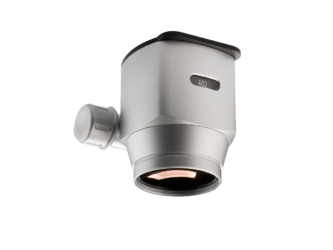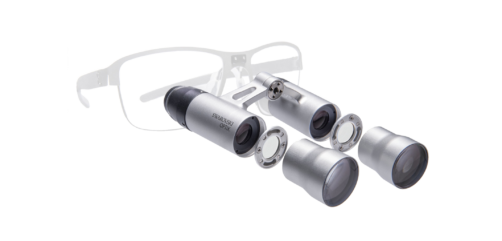Binocular magnifiers: application in medicine, types and advantages
Ensuring the quality of diagnostics, detecting diseases in the early stages, correctly establishing a diagnosis - a binocular magnifier will help you cope with all these tasks. This is an important tool in the arsenal of a doctor who strives to guarantee patients high-quality diagnosis and treatment. Binocular magnifiers are successfully used in dentistry, dermatology, surgery and general medicine and have many obvious advantages. So today we will talk about them in more detail.
What is a binocular magnifier?
A binocular magnifier is an optical device that magnifies the necessary area for a more accurate assessment of the clinical picture. Magnification is possible with the help of special lenses. The power of magnification in most models of modern binoculars is from x2,5 to x20 times.
Advantages of binocular magnifiers:
- Early diagnosis of diseases. The doctor can see minor changes in tissue structure. For example, a carious spot on the teeth or enamel microcracks.
- Accuracy of diagnosis. Modern binoculars help to detect not only the disease itself, but also to find its cause more easily. This is necessary for correct diagnosis and selection of treatment strategy.
- Convenience for the doctor. The design of modern binocular loupes allows you to choose the optimal tilt angle and work in a position that will be comfortable for you and your patient.
- Illumination of the working area. Thanks to this option, we get the opportunity to work with binoculars even in conditions of insufficient external lighting: without shadows, darkening and other obstacles.
A sufficient range of models allows you to choose a binocular magnifier, focusing on the requirements of a specific medical field. So, let's talk about what binoculars are like.
What are binocular magnifiers?
Binoculars differ in purpose, characteristics, and functions. The optimal model should provide a high-quality examination, enlarge the image to the required level without losing its quality, guarantee the comfort of the doctor's work and not disturb the patient during the procedure.
The most important difference between different models of binoculars is the type of magnification system. Modern bipolar magnifiers use:
- Galileo system — compact, lightweight binoculars that increase the working area to 3.8x. Due to the simplified design, a lot of light is transmitted. They do not press on the bridge of the nose, they are light, that's why — comfortable for the doctor.
- Kepler's system, or the prismatic system. They guarantee a high level of magnification, a significant working field and a high sharpness of the image. However, compared to the previous type of system, they are heavier and more massive.
Depending on the place of attachment, there are 3 types of binocular magnifiers:
- Mounted on the frame (binocular glasses) — by design, they look like ordinary glasses. But they have a reliably fixed optical device. This device can be lifted at any time and simply remain in the glasses.
- Built-in binoculars. The optical part is built directly into the glasses, which significantly reduces the load on the bridge of the nose. The optics are located as close as possible to the pupil of the eye, ensuring very convenient work.
- Attached to the helmet. The structure is worn on the head and has the shape of a helmet. Thanks to this, the mass is distributed evenly.
Also, different models of equipment differ in working distance, magnification, viewing angle, and the presence of backlighting.
Binocular magnifiers in dentistry
Dentistry is a branch of medicine where binoculars are used most often. After all, such equipment provides a wide field of vision for the dentist. Thanks to this, the specialist can:
- Comprehensively examine the oral cavity. Assess the condition of teeth even in "blind areas".
- Detect caries and other diseases in the early stages. Then, when they are most easily treated. This helps to prevent the development of chronic processes, prevent the further development of inflammation.
- Assess the anatomical features of the tooth canals, which cannot be seen with the naked eye. In this way, highly accurate and effective treatment of root canals is ensured.
The use of binoculars is the optimal solution for various branches of dentistry:
- Implantology. They ensure the accuracy of the inspection and the ideal final result. Usually, dentists who make and install dental implants choose binoculars with a magnification of x3,5 times and a powerful illumination of the working area.
- Restorative and orthopedic dentistry. Binoculars allow artistic restoration, orthopedic treatment with high precision. The optimal models of binocular magnifiers for these functions have light weight, convenient mounting, adjustable illumination, increase the working area by 2-2,5 times.
- Endodontics. Endodontic treatment requires high precision. That is why binoculars with x4-6 magnification and powerful focused light will be optimal for endodontists.
Binoculars are one of the most useful tools in the arsenal of a modern dentist, which allows the doctor to guarantee high accuracy of treatment. And patients — to receive quality services.
Binocular magnifiers and surgery
The use of binoculars in surgery allows for surgical intervention with maximum accuracy. The surgeon can examine the required area with multiple magnifications: binoculars guarantee image clarity, accurate color rendering, and do not distort or blur elements. Thanks to the illumination of the working area, we get a picture without shadows and darkening.
Modern models of binoculars for surgeons can be equipped with:
- Interchangeable lenses with different levels of magnification. Lenses for surgical binoculars are made of molded ABS acrylic, which provides clear, undistorted images.
- It is possible to adjust the viewing angle, turn the lighting according to the doctor's needs.
- Clips that allow you to change lenses easily and quickly, if there is a need for a more significant increase in the image.
The fit of such binoculars on the head is usually adjusted with one click. Thus, convenient use of binoculars is ensured, without fatigue and pain in the neck and back.
Use of binoculars in dermatology
In dermatological practice, binocular magnifiers help:
- diagnose skin diseases in the early stages;
- assess the condition of nevi (moles);
- establish the correct diagnosis;
- remove skin neoplasms;
- choose the correct strategy for the treatment of certain dermatological diseases.
This is a guarantee of early diagnosis, correct diagnosis and comfort for the patient during the examination. A dermatologist can examine the necessary area with multiple magnifications and clearly understand the clinical picture.
How to choose a binocular magnifier?
Focus on the purpose of the optical device and the functions for which it will be used. The main parameters for choosing binoculars are:
- type of augmentation system;
- viewing angle;
- working distance (affects work ergonomics);
- type of fastening.
Additional features worth paying attention to:
- Lens manufacturing technology — it is indicated in the labeling of optics. The best option is High Resolution lenses. In addition, the lenses must be achromatic. They provide accurate color rendering and clarity of image contours.
- Lens coating — it should remove light reflections (up to 0,3 — 0,5%), thus ensuring the purity of the image.
- Moisture and dust resistance standards — it is important that this parameter is not lower than IP 65.
- Presence of backlight. Additional lighting makes the process of using binoculars more convenient. After all, the light is directed directly at the object under study, without shadows and other obstacles. Illumination can be different: on a plastic visor, on the edges of the optics, in the form of a lantern. It is usually powered by batteries, which must be changed periodically.
Wrinkle: when using a binocular magnifier, use optical shields or protective lenses.
Binocular magnifiers in medicine: let's summarize
The use of binoculars makes modern medicine more accurate, and diagnostic results informative and timely. Thanks to such optical devices, it is possible to comprehensively examine the required area, notice the smallest changes in the tissue structure, and choose a treatment strategy that will be correct for your patient. Binoculars allow the doctor to guarantee a qualitatively new level of diagnosis, and the patients to be sure of the best result.
Would you like to consult on the choice of binoculars and order optics for your clinic? D-Optic specialists will help you. Call the number indicated on the website or leave a request for feedback. The catalog offers certified optical equipment from leading manufacturers: ZEISS, STARMED and others.





